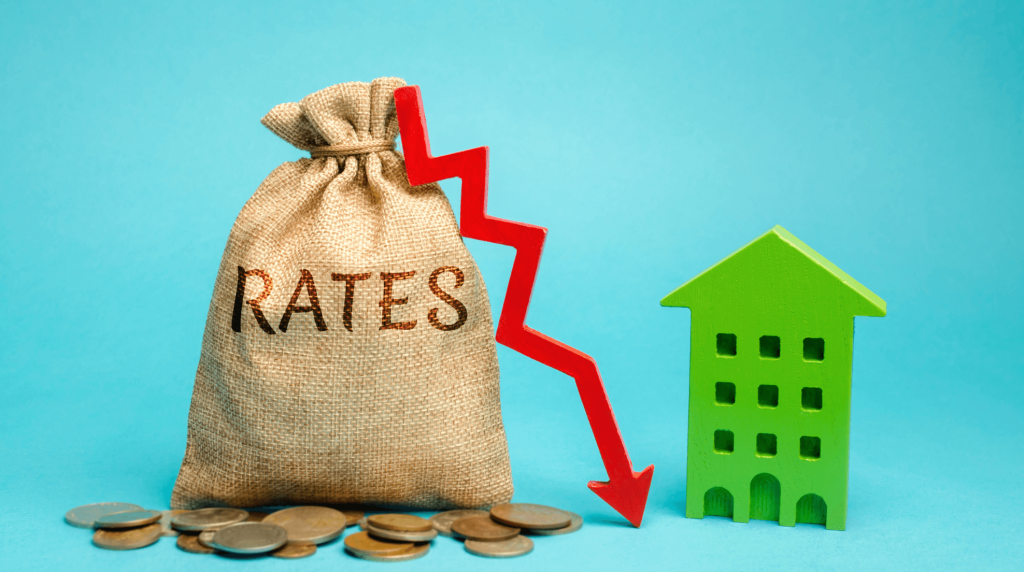The Big Four banks reveal forecast for interest rates

The home loan market has experienced serious fluctuations in the past year due to a series of rate hikes initiated by the Reserve Bank of Australia (RBA) in response to concerns about inflation. While the RBA has maintained a tightening bias, experts from the Big Four banks have varied opinions on whether the current official cash rate of 4.10% will be the peak or if we’re likely to be hit with further rate increases.
Encouragingly, as the economy rebounds from disruptions, the big banks suggest that rate cuts may be on the horizon, potentially within the next two years. This positive development offers hope for borrowers seeking relief in their interest payments.
Predictions from the Big Four banks have been varied throughout the year, with some accurately forecasting the rate hikes while others missed the mark. The uncertainty surrounding the RBA’s decisions and the complex economic indicators create an atmosphere of debate and speculation within the financial industry.
Headline inflation, though slowing compared to previous months, remains a concern for the RBA. RBA Governor Philip Lowe emphasises the importance of bringing inflation under control, signalling that further rate hikes may be necessary to achieve this goal.
Yet, the pace and extent of future rate increases will hinge on economic indicators that currently provide a mixed picture. While consumer spending and growth have slowed, property prices have shown signs of recovery, and employment remains tight.
Currently ANZ, Westpac, and CBA suggest that 4.10% could mark the peak of the tightening cycle, providing some much needed relief for borrowers. However, the economic landscape remains fluid, and the RBA’s decisions will continue to be closely monitored by experts and market participants alike.
Predicting the Peak Cash Rate: Forecasts by the Big Four Banks
In August 2023, major Australian banks, namely CBA, ANZ, Westpac, and NAB, provided their predictions for the peak cash rate figures. The projections are as follows:
- CBA: 4.10%
- ANZ: 4.10%
- Westpac: 4.10%
- NAB: 4.60%
It’s worth mentioning that NAB’s official interest rate forecast page has not been updated publicly since June, where they projected a cash rate peak of 4.60%. Despite this, the other major banks seem to agree on a lower peak.
With the state of the current economy, it believed that there may still some potential tightening left to be implemented, primarily driven by Aussie borrowers transitioning from lower fixed rates during the pandemic to variable ones as their terms end. This process may lead the cash rate to achieve a level needed to fully address inflation concerns. However, it is essential to consider that mortgage stress is still a significant factor impacting the housing market, even if the last cash rate decisions to pause hikes have been implemented. Borrowers all over the country will be monitoring the situation, hoping for a time when interest rates eventually come down.
Can we expect rate cuts or a recession in 2023?

The Reserve Bank of Australia (RBA) is likely to hold off from hiking the cash rate further if inflation appears to be under control or if the economy begins to slow down excessively. In an event like this, the RBA may opt to ignite economic activity by cutting the cash rate in order to mitigate the risk of a recession.
A recession typically leads to mortgage holders defaulting on their payments, putting considerable pressure on consumer spending due to a burden of debt. This may force the RBA to reverse its tightening measures and urgently lower the cash rate to provide an emergency boost to the economy.
It is important to note that there isn’t a definitive certainty regarding whether the economy will face a downturn. The risk of a recession remains a concern with every decision the RBA makes, particularly considering that inflation has been driven more by supply-side disruptions and corporate profiteering, rather than the usual demand-side factors.
Current economic indicators and what we can expect?
Despite these potential risks, there are positive indicators in the Australian economy. Strong employment figures and stable consumer spending, alongside the gradual resolution of global disruptions, contribute to a cautious yet optimistic outlook.
Furthermore, leading banks anticipate that inflationary pressures on the economy may ease off by mid to late 2024 and into 2025. This could prompt the RBA to ease its firm stance on the cash rate and consider implementing a series of rate cuts.
CBA, Westpac, and NAB are predicting that interest rates may start coming down in 2024 at the earliest, possibly reaching a neutral territory of around 3%. Meanwhile, ANZ researchers suggest that rate cuts may occur at a later stage. In any case, there is hope for a potential mortgage relief on the horizon.
With the current cash rate resting at 4.10%, home loan borrowers will continue to keep a close eye on the RBA’s future decisions. The evolving economic conditions will play a crucial role in determining the trajectory of interest rates in the coming months and years.
Get ahead and use smart strategies to manage your mortgage
In this stressful time of rising interest rates, fortunately there are advantageous ways to navigate monetary policy and effectively manage your mortgage. So before you get into a pinch, it’s a good time to take proactive measures to ensure your mortgage stays within your budget. Whether you already a homeowner with a mortgage or are looking to buy property, here are some strategies to consider:
For Existing Mortgage Holders:
- Utilise an Offset Account: Consider opening an offset account, and make regular payments particularly if you have a variable home loan. This account can lead to substantial interest savings over time.
- Compare, Seek Sharper Rates and Refinance: Stay informed about interest rate fluctuations and compare different loan options. If you find a better deal, consider refinancing your mortgage. This could lead to better rates, additional features, and improved customer support.
- Focus on Savings: Although home loan rates may have increased, savings account interest rates are also on the rise. Take advantage of this opportunity by exploring high-interest rate savings options and potentially making the switch.
For Prospective Property Buyers:
- Explore Government Assistance: If you’re planning to buy property, research the first home buyers grants and schemes available in your state. Additionally, the government’s Help to Buy scheme may provide support on a national level.
- Demonstrate Financial Stability: To increase your chances of loan approval, show lenders that you are a reliable borrower. Pay off existing debts, save for a larger deposit, and maintain a favourable credit history.
- Negotiate with Confidence: Higher interest rates can reduce competition at property auctions, which may create an opportunity for negotiation. Be prepared to confidently negotiate prices with sellers, especially in areas where house prices have declined.
Embracing these strategies will empower you to navigate the current economic climate with confidence and keep your mortgage well-managed. By taking your mortgage management approach by the horns, you can make the most of the current market conditions and achieve your property and financial goals.
Get in touch with our mortgage experts at Rateseeker today and we can help you secure the sharpest rate on your home loan, whether you’re borrowing for the first time or refinancing from your fixed rate loan.
** General Advice Warning
The information provided on this website is general in nature only and it does not take into account your personal needs or circumstances into consideration. Before acting on any advice, you should consider whether the information is appropriate to your needs and where appropriate, seek professional advice in relation to legal, financial, taxation, mortgage or other advice.




